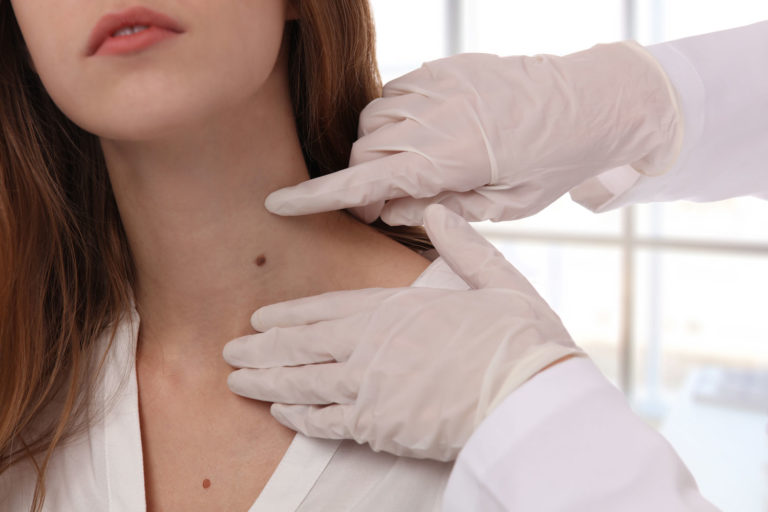What are Moles?
Moles (nevi) are normal skin growths that appear when a cluster of pigment cells called melanocytes develop on the skin instead of being spread out across the skin. Most moles are harmless, however, they can become dangerous and develop into melanoma. Melanoma causes over 10,000 deaths per year. People with 100+ moles are at a greater risk for developing Melanoma. Skin growths that have a higher-than-average chance of becoming cancerous include:
- CONGENITAL NEVI: Moles present at birth. The larger their size, the greater the risk for developing skin cancer.
- ATYPICAL or DYSPLASTIC NEVI: Typically display signs of melanoma, like large size, irregular shape, uneven borders, and coloring. Therefore, it’s important to check them for cancerous cells.
Skin Cancer & Moles
Melanoma most commonly appears as strange or abnormal moles that follow the ABCDE’s of melanoma warning signs. It’s important to perform regular self-exams and get frequent professional checkups, especially if you have a family history of melanoma or major sun damage. See a skin cancer expert if you notice any of the following: The ABCDE’s of Melanoma Warning Signs
- A – Asymmetry: part of the skin growth looks different than the rest of the mole
- B – Border irregularity: edges are irregular, uneven, or jagged borders
- C – Color changes: multi-colored or dark moles
- D – Diameter: large ones with a diameter greater than or equal to 1/4 inch (6 millimeters), the size of a pencil eraser
- E – Evolving: changes in the way it looks over time, or development of other symptoms like itchiness, oozing, or bleeding
Suspicious skin growths may be biopsied to check for cancerous cells. It is extremely important to treat melanomas before they spread, so early detection of abnormal moles is key. Perform regular self-exams and get frequent professional checkups, especially if you have a family history of melanoma, have significant sun damage, or have other risk factors.
Removal Methods
- Electrocautery: superficial burning with electricity
- Cryosurgery: superficial freezing with liquid nitrogen
- Excision: Surgical cutting or shaving
Regrowth
If you have a mole removed and it grows back, seek additional treatment immediately since this is abnormal behavior.
For more information about Moles (Nevi), view some of our articles.

